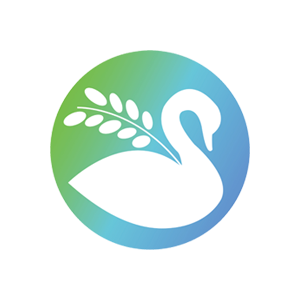
Niigata
Home > Niigata
Niigata is a major city on the northwest coast of Japan that has developed as a port town. It is located at the mouths of two large rivers, the Shinano River and the Agano River, and most of the city is lowland, much of which is used for rice fields. There are many large and small lakes in the city.
Once there were numerous wetlands in Niigata. But over hundreds of years, most of them have disappeared due to flood control works and the development of new rice fields. However, awareness about the importance of wetlands and its functions has been growing, and policy changes aiming at promoting Wise-Use and conservation of Wetlands are being implemented.
The word “Niigata” means “a new lagoon” in Japanese. The original meaning of “Kata” or “Gata” is lagoon, lakes separated from the sea, but we call all lakes Kata regardless of its origin in Niigata. There are still a lot of Kata, which are conserved and used wisely by local societies in Niigata.
In Sakata, a Ramsar Site, local residents are engaged in lagoon conservation activities such as cutting reeds and removing mud. Over the past few years, eutrophication of lake water have become problems. Once they have used the Lotus roots as food and sold the flowers, but they can no longer be seen. Therefore, efforts are being made to revive the Lotuses.
Fukushimagata and Toyanogata are potential candidate sites for Ramsar Sites. Fukushimagata has been greatly reduced in area due to reclamation, but in recent years it has been partially restored. It is famous for being a place full of wildlife such as Bean Geese, and “Onibasu”, Gorgon Plant. At a Festival in autumn, people can enjoy “Hishi”, Water Caltrops and Onibasu in cuisine.
Toyanogata is a wetland located in the urban area. In spite of its location, high quality of water is maintained by irrigation water in winter, even though that is usually unnecessary. Various activities such as festivals and environmental education are carried out by local groups. These three Kata are famous for roosts of thousands of swans and other waterfowls in winter.
Including other wetlands, Niigata city local government holds conferences for network of groups related to each Kata. At the conference, we exchange information on conservation and Wise-Use of wetlands, and create a lagoon guidebook every year. These guidebooks are used for footpaths events for citizens.
In addition to Kata, there are a lot of rice paddies, and 44% of the city is covered with wetlands. Rice paddies are feeding grounds for migratory waterfowls, and are places where humans and wildlife coexist.
Niigata is located on the East Asia-Australasia flyway, and many waterfowl migrate from Siberia in autumn. Niigata City is located on the coast, so it has exceptionally little snowfall on the Sea of Japan side. In addition, the wetlands as roosts do not freeze completely, which makes Niigata City an important wintering location for migratory waterfowls. The number of Tundra Swans and Bean Geese wintering is the largest in Japan. Swans are seen everywhere in the city, so they are familiar to the citizens as “City Bird of Niigata”.